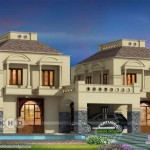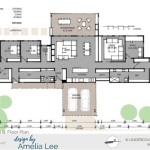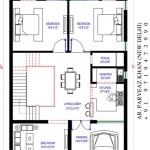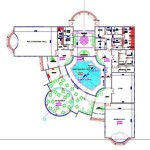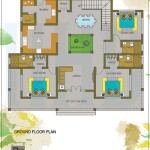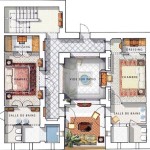Old Florida House Floor Plans: A Glimpse into Architectural History
Old Florida house floor plans represent a distinct architectural style born from the environmental realities and cultural influences that shaped the state’s early development. These plans are more than just blueprints; they are a testament to the resourcefulness and adaptability of settlers in a subtropical climate, reflecting a time before widespread air conditioning and modern building materials. Examining these floor plans provides valuable insights into the lives, preferences, and priorities of the people who called Old Florida home.
The architectural style categorized as Old Florida, often referred to as "Florida Cracker" or "Florida Vernacular," emerged during the 19th and early 20th centuries. It was heavily influenced by the available resources, the need for natural ventilation, and the prevailing Southern building traditions. These homes were typically built with local materials like pine, cypress, and palmetto, and designed to maximize airflow and minimize the impact of heat and humidity.
Understanding the key characteristics of Old Florida house floor plans requires examining several recurring elements. From the typical layout, to the material choices and their functional intent, these aspects are crucial for recognizing and appreciating this unique architectural style.
Key Point 1: The Emphasis on Natural Ventilation and Covered Outdoor Spaces
One of the most defining features of Old Florida house floor plans is the prioritization of natural ventilation. This was a necessity in a climate characterized by long, hot, and humid summers. Floor plans often featured a central hallway, also known as a "dogtrot," which ran from the front to the back of the house. This hallway acted as a wind tunnel, facilitating airflow and helping to cool the interior spaces.
Windows were strategically placed to capture breezes and promote cross-ventilation. Large windows, often with multiple panes, were common, and they were typically positioned on opposite sides of the house to maximize airflow. Overhanging eaves and porches provided shade, reducing the amount of direct sunlight that entered the house, further contributing to a cooler interior.
Porches were another integral aspect of Old Florida house design. They served as outdoor living spaces, offering a respite from the heat and a place to socialize with neighbors. Front porches, often deep and covered, were common, and some homes also featured back porches or verandas. These covered outdoor spaces extended the living area of the house and provided a comfortable area to relax and enjoy the outdoors, protected from the sun and rain.
The orientation of the house was also carefully considered to optimize natural ventilation. Homes were often positioned to take advantage of prevailing winds, and landscaping was used to provide shade and create a cooling effect. Trees were strategically planted to block the sun during the hottest parts of the day, while allowing breezes to flow through the property.
Within the floor plan, rooms were often generously sized to allow for greater air circulation. High ceilings were also a common feature, as they helped to trap hot air near the ceiling, keeping the lower portions of the room cooler. The combination of these design elements created a living environment that was naturally cooler and more comfortable, even without the aid of modern air conditioning.
Key Point 2: Simple Rectangular Layouts and Functional Room Arrangements
Old Florida house floor plans were typically characterized by their simplicity and practicality. The most common layout was a rectangular shape, often with a central hallway running the length of the house. This simple design was efficient to construct and made the most of available materials. The rectangular shape also naturally encouraged cross ventilation throughout the house.
Rooms were arranged according to their function, with living spaces typically located at the front of the house and bedrooms at the back. The kitchen was often placed at the rear of the house, near the garden or well. Bathrooms were frequently located off the central hallway, or sometimes in an outbuilding, particularly in the earliest examples of these homes.
The size of the rooms varied depending on the size of the house and the needs of the family. Parlors, or living rooms, were often the largest rooms in the house, and they served as a gathering place for family and guests. Bedrooms were typically smaller and more private, providing a sanctuary for rest and relaxation.
Formal dining rooms were not always a standard feature in Old Florida homes. In smaller houses, the kitchen often served as the dining area. In larger homes, a separate dining room might be included, but it was typically a simple and functional space. The emphasis was on practicality and comfort, rather than elaborate decoration or formal entertaining.
Storage space was also an important consideration in Old Florida house floor plans. Closets were not always built into the original design, and wardrobes or freestanding cabinets were often used for storage. Attics and basements were also used for storage, although basements were less common in areas with high water tables.
The functional arrangement of rooms in Old Florida house floor plans reflected the daily routines and priorities of the people who lived in them. The design was simple, practical, and well-suited to the needs of a rural, agrarian lifestyle.
Key Point 3: Use of Local Materials and Elevated Foundations
The availability of local materials played a significant role in shaping Old Florida house floor plans. Pine and cypress were the most commonly used woods for framing, siding, and flooring. These woods were readily available and relatively inexpensive, and they were also naturally resistant to insects and decay, making them well-suited to the humid climate.
Palmetto fronds were often used for roofing, particularly in the early days of settlement. Palmetto roofs were inexpensive and readily available, but they were also relatively short-lived and required frequent replacement. As sawmills became more common, shingle roofs made of pine or cypress became more popular.
Foundations were typically made of brick, stone, or wood pilings. Elevated foundations were a common feature in Old Florida homes, particularly in low-lying areas prone to flooding. Elevated foundations also helped to protect the house from insects and rodents, and they allowed for better ventilation under the floorboards.
The use of local materials not only made construction more affordable but also contributed to the distinctive aesthetic of Old Florida architecture. The natural colors and textures of the wood and palmetto gave the houses a rustic and organic feel that blended seamlessly with the surrounding landscape. The choice of materials also ensured that the houses were well-adapted to the local climate and conditions.
The construction techniques used in Old Florida homes were also relatively simple and straightforward. Carpenters relied on traditional methods and readily available tools. The emphasis was on practicality and durability, rather than elaborate ornamentation or complicated designs. The resulting houses were sturdy, functional, and well-suited to the needs of the people who lived in them.
The materials selected and the way they were employed in the floor plans reflected a deep understanding of the surrounding environment. This knowledge was essential for creating homes that were not only comfortable and functional but also sustainable and resilient in the face of Florida's unique climate challenges.
In conclusion, Old Florida house floor plans offer a fascinating glimpse into the architectural history of the state. Their emphasis on natural ventilation, simple layouts, and the use of local materials reflects the ingenuity and resourcefulness of early settlers. By studying these floor plans, it is possible to gain a deeper appreciation for the unique character and enduring legacy of Old Florida architecture.
These architectural choices were borne out of necessity and adaptation, resulting in a style that is both practical and aesthetically pleasing. The enduring appeal of Old Florida house floor plans lies in their ability to connect us to the past and to remind us of the importance of simple, sustainable living.

Old Florida House Plan Style Home Floor Plans West Indies

Old Florida House Plan Style Home Floor Plans

Beach House Plan 1 Story Old Florida Style Coastal Home Floor Plans

Beach House Plan Old Florida Coastal West Indies Style Floor Plans Luxury

Beach House Plan 1 Story Old Florida Style Coastal Home Floor Plans Flooring Key West

Unique Old Florida Design 66204we Architectural Designs House Plans

Florida House Plans Mediterranean Floor

Beach House Plan Old Florida Style Open Layout Covered Lanai Pool Plans Cottage

Beach House Plan 1 Story Old Florida Style Coastal Home Floor Plans

Old Florida Tracey Homes Swfl Custom Built


